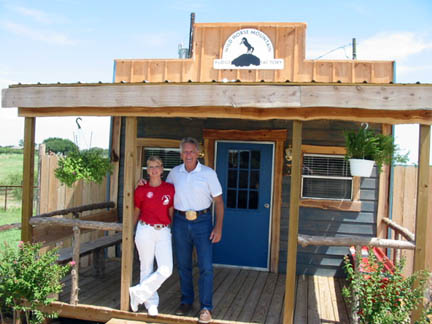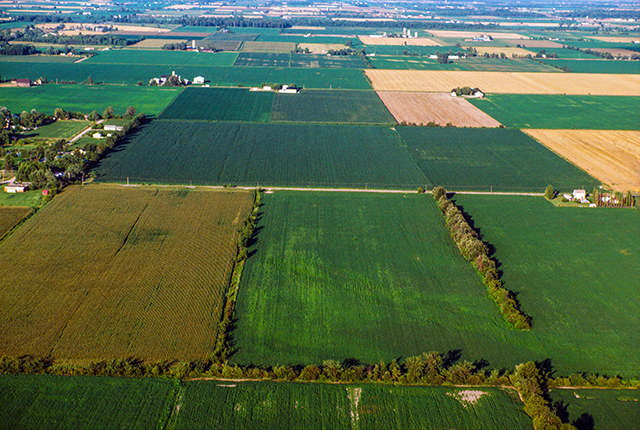Country Lifestyles
Wild Horse Mountain Fudge Factory: A one-of-a-kind place, for a one-of-a-kind experience

By staff writer Jessica Bartel
With an eye for possibilities, a creative side and an entrepreneur mind, Mike Hughes is a man of many trades. As a young man on family trips, Hughes remembers traveling through North Texas and stopping along Highway 82 at a gas station just west of Nocona. Years later, Hughes stopped off at that old gas station to find it vacant and run down. He and wife Tammy managed to get information on the piece of property and bought it. Today the site is unrecognizable. Adorned with Mike Hughes Ranch signs, the two have made it a comfortable home.
Five years ago, Hughes stumbled upon his, “next great idea” while at a flea market when an unknown, shiny object caught his eye. Without knowing its identity, Hughes offered the seller $100 and took it. The large, stainless steel, heavy object looked to Hughes like a paint mixer.
After getting it home and making a thorough investigation, the two found a serial number, manufacturing number and address from Amityville, New York. After one quick phone call the mystery object was determined to be a fudge maker capable of making 32 pounds at one time.
The fudge making machine works as a double boiler with the bottom portion filled with water that cooks and stirs the decadent mixture up to 160 degrees. Through some homework, Hughes found out a new machine at the time sold for $4,750, which today would be $5,200.
With no formal training in how to make fudge, Hughes and wife Tammy enlisted the help of the folks in New York for questions, samples and recipes. Tammy had grown up making the dessert with her mother so the task was not completely unfamiliar to her. After several trial batches Tammy came to find the essential flavors that went over well: chocolate, chocolate pecan and a brown sugar fudge called Penuche. To read more pick up the April 2014 issue of North Texas Farm & Ranch.
Country Lifestyles
While We Were Sleeping

By Martha Crump
That old adage, “What you don’t know won’t hurt you.,” may have some basis in truth when applied to minor situations. However, when what you don’t know is presented in the form of a “Trojan Horse” and is what amounts to an incredible attempt to fleece American property rights, it becomes a different story altogether.
To put this unbelievable tale together, we need to step back to Joe Biden’s 2021 Executive Order which pledged commitment to help restore balance on public lands and waters, to create jobs, and to provide a path to align the management of America’s public lands and waters with our nation’s climate, conservation, and clean energy goals.
To read more, pick up a copy of the April issue of NTFR magazine. To subscribe by mail, call 940-872-5922.
Country Lifestyles
Lacey’s Pantry: Strawberry Sorbet

By Lacey Vilhauer
Ingredients:
1 whole lemon, seeded and roughly chopped
2 cups sugar
2 pounds strawberries, hulled
Juice of 1 to 2 lemons
¼ cup water
Directions:
Place the chopped lemon and sugar in a food processor and pulse until combined. Transfer to a large bowl. Puree the strawberries in a food processor and add to the lemon mixture along with juice of one lemon and water. Taste and add more juice as desired.
To read more, pick up a copy of the April issue of NTFR magazine. To subscribe by mail, call 940-872-5922.
Country Lifestyles
A Mountain Out of a Molehill

By Nicholas Waters
As winter plods along – come Spring and gopher mounds – homeowners and farmers find themselves playing a familiar song – fiddling while Rome is burning.
Let’s make a mountain out of a molehill. Those mounds on your lawn and pasture could be moles, but they’re more than likely gophers; Plains Pocket Gophers to be pragmatic – Geomys bursarius to be scientific.
These rodents dig and chew, and the damage they can do goes beyond the mounds we mow over. Iowa State University cited a study in Nebraska showing a 35 percent loss in irrigated alfalfa fields due to the presence of pocket gophers; the number jumped to 46 percent in decreased production of non-irrigated alfalfa fields.
The internet is replete with academic research from coast-to-coast on how to curtail gopher populations, or at least control them. Kansas State University – then called Kansas State Agricultural College – also published a book [Bulletin 152] in February 1908 focused exclusively on the pocket gopher.
To read more, pick up a copy of the April issue of NTFR magazine. To subscribe by mail, call 940-872-5922.
-

 Country Lifestyles1 year ago
Country Lifestyles1 year agoScott & Stacey Schumacher: A Growth Mindset
-

 Equine7 months ago
Equine7 months agoThe Will to Win
-

 Country Lifestyles7 years ago
Country Lifestyles7 years agoStyle Your Profile – What your style cowboy hat says about you and new trends in 2017
-

 Country Lifestyles4 years ago
Country Lifestyles4 years agoAmber Crawford, Breakaway Roper
-

 HOME7 years ago
HOME7 years agoGrazing North Texas – Wilman Lovegrass
-

 Country Lifestyles7 years ago
Country Lifestyles7 years agoDecember 2016 Profile, Rusty Riddle – The Riddle Way
-

 Country Lifestyles8 years ago
Country Lifestyles8 years agoJune 2016 Profile – The man behind the mic: Bob Tallman
-

 Outdoor9 years ago
Outdoor9 years agoButtercup or Primrose?






